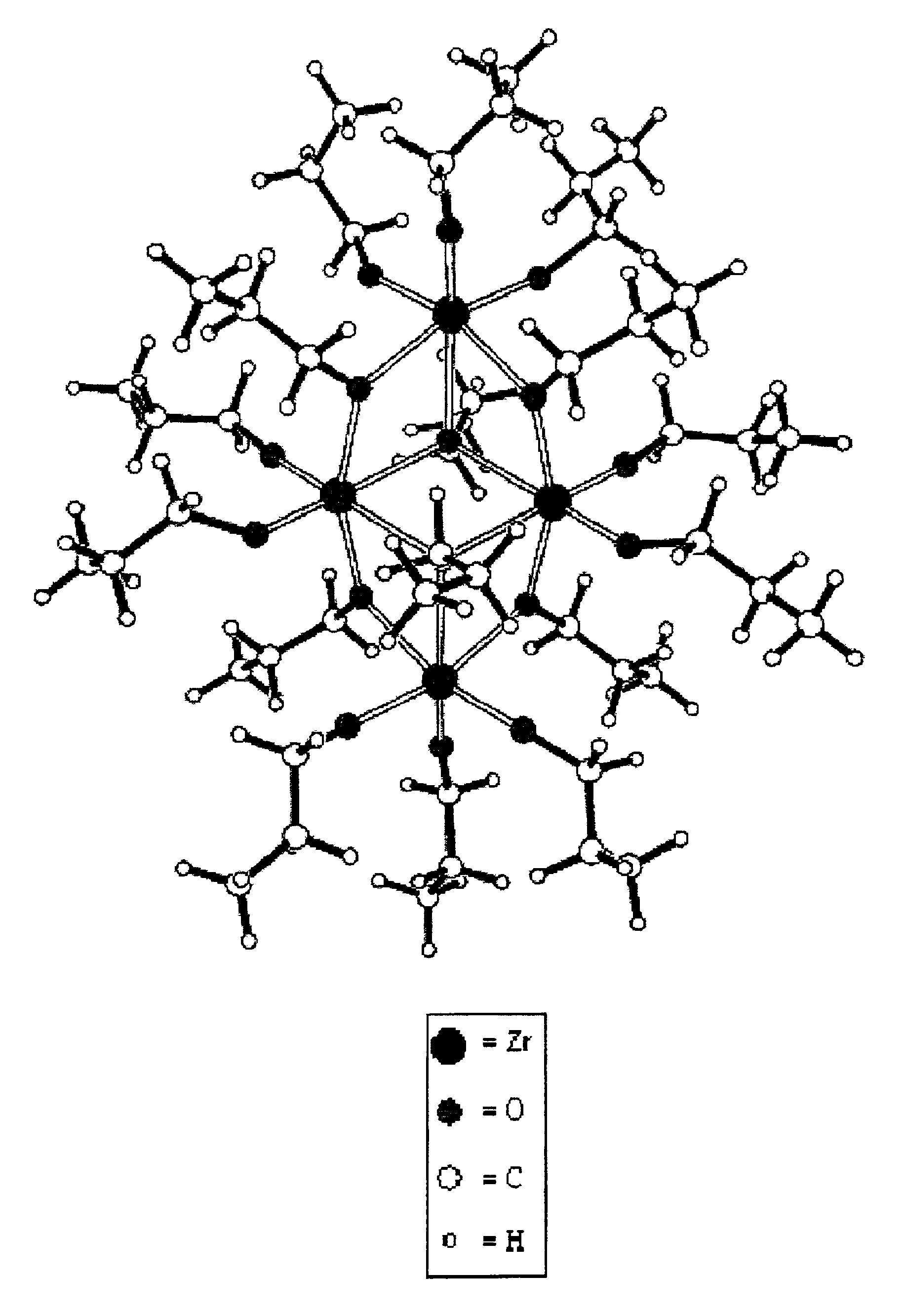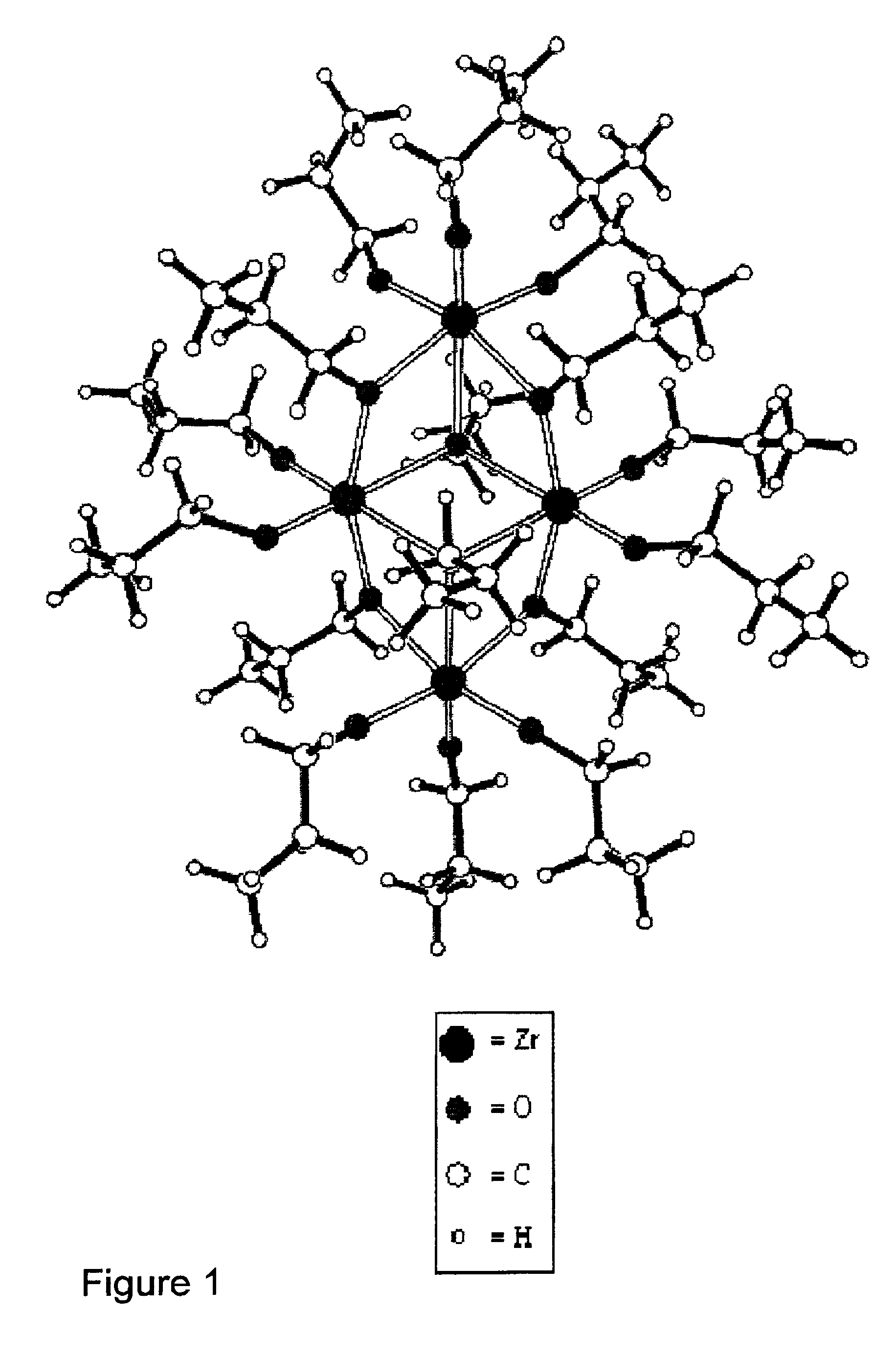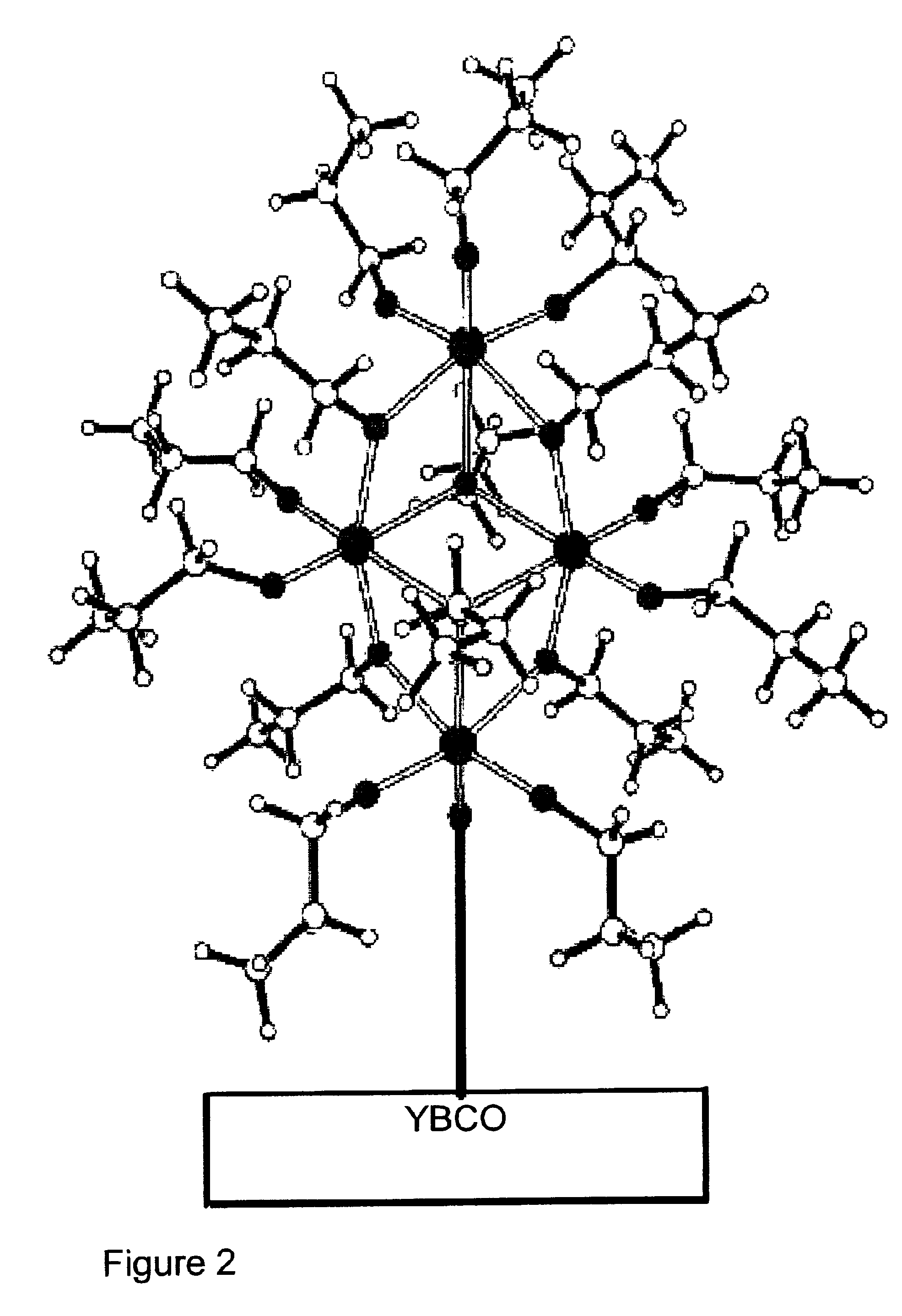Metal alkoxides and methods of making same
a technology of metal alkoxides and insulating films, applied in the field of insulating films, can solve the problems of difficult preparation of complex materials, difficult coating of the surface of oxide ceramic superconductors with thin insulating films, and environmental sensitive nature of oxide superconductors,
- Summary
- Abstract
- Description
- Claims
- Application Information
AI Technical Summary
Benefits of technology
Problems solved by technology
Method used
Image
Examples
example 1
Preparation of Tetra-n-Propyl Zirconate (Zr4(OPrn)16)
A 250 mL, two-neck round bottom flask with ground glass joints was charged with 100 mL of a 70 wt % solution of partially-hydrolyzed tetra-n-propyl zirconate in n-propanol. The flask was then joined to a nitrogen inlet and a distillation apparatus constructed from a 24 mm i.d. Vigreux reflux column 20.3 cm in length, a distillation head with a thermometer, and a Liebig condenser with a jacket length of 20.0 cm. Components of the distillation apparatus were not connected by ground-glass joints but were instead integrated into a single piece of glassware. A 100 mL single-neck receiving flask was joined to the still body by an elbow fitted with a nitrogen / vacuum inlet. All ground glass joints were sealed with silicone grease and secured with copper wire.
n-Propanol was removed from the partially-hydrolyzed tetra-n-propyl zirconate solution under nitrogen by heating the distillation flask in a silicone oil heating bath and collecting a...
example 2
Analysis of Tetra-n-Propyl Zirconate (Zr4(OPrn)16)
Both 500 MHz 1H and 125.6 MHz 13C{1H} NMR spectra were measured on a UNITY 500 spectrometer (VARIAN, Palo Alto, Calif.), and those recorded at 750 and 188.6 MHz, respectively, were measured on a UNITY INOVA 750 spectromete (VARIAN). Gradient-enhanced 1H—1H COSY experiments, gradient phase-sensitive 1H—13C heteronuclear multiple-quantum coherence (HMQC) experiments, and 13C inversion-recovery experiments were performed using standard pulse programs. Chemical shifts were internally referenced to tetramethylsilane (δ=0.00). NMR samples were typically prepared by distilling 0.75 mL of deuterated solvent into a 5 mm o.d. NMR sample tube containing ca. 45 mg tetra-n-propyl zirconate. The tube was then flame-sealed under vacuum. Elemental analysis was performed by the University of Illinois Microanalytical Service Laboratory.
Analytical calculation for Zr4O16C48H112 in weight percent is as follows: C, 44.00; H, 8.62; Zr, 27.85. Weight percen...
example 3
Preparation of YBCO Superconducting Films
YBa2Cu3O7 (YBCO) high-temperature superconducting films were grown by off-axis planar magnetron sputter deposition on oriented, single-crystal SrTiO3 (STO) substrates. Depending on the orientation of the substrate, and whether or not a PrBa2Cu3O7 (PBCO) buffer layer is first grown on the substrate, the YBCO film can grow in four crystallographic orientations. The (001)- and (103)-oriented YBCO are grown on (100)- and (110)-oriented STO, respectively if no PBCO buffer layer is grown. If a PBCO buffer layer is grown, the (100)- and (110)-oriented YBCO are grown on (100)- and (110)-oriented STO, respectively.
PUM
| Property | Measurement | Unit |
|---|---|---|
| thickness | aaaaa | aaaaa |
| purity | aaaaa | aaaaa |
| NMR spectroscopy | aaaaa | aaaaa |
Abstract
Description
Claims
Application Information
 Login to View More
Login to View More - R&D
- Intellectual Property
- Life Sciences
- Materials
- Tech Scout
- Unparalleled Data Quality
- Higher Quality Content
- 60% Fewer Hallucinations
Browse by: Latest US Patents, China's latest patents, Technical Efficacy Thesaurus, Application Domain, Technology Topic, Popular Technical Reports.
© 2025 PatSnap. All rights reserved.Legal|Privacy policy|Modern Slavery Act Transparency Statement|Sitemap|About US| Contact US: help@patsnap.com



